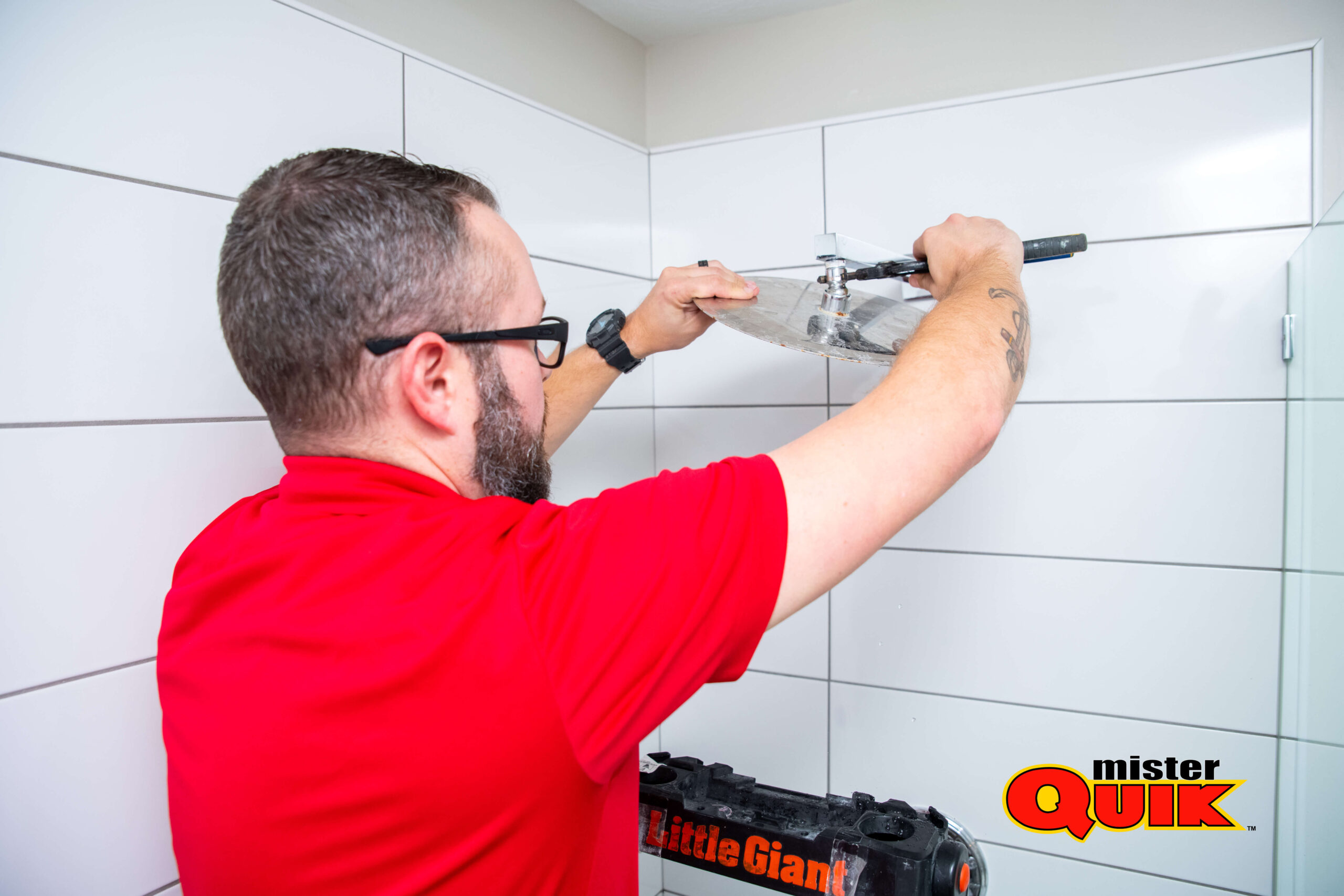Faucet Repairs Near Me

Shower Faucet Repairs
A leaky shower faucet isn’t just annoying, it can waste water and money. But before you call the plumber, consider tackling the repair yourself! With a little know-how and the right tools, you might be surprised at what you can fix.
Replacement parts: Washers, cartridges, valve stems, depending on the diagnosed issue.
Fixing the Flow: A List of Common Repairs
- Tightening the Packing Nut: For minor drips, simply tighten the packing nut around the faucet stem with your wrench. Be careful not to overtighten and damage the stem.
- Replacing Washers: Turn off the water supply and remove the handle and trim plate. Replace worn-out washers with new ones of the same size and material.
- Replacing Cartridges: Identify your faucet’s cartridge type and use the puller (if needed) to remove the old one. Install the new cartridge according to the manufacturer’s instructions.
- Cleaning Aerators: Unscrew the aerator from the faucet spout and soak it in vinegar to remove mineral buildup. Rinse thoroughly and reinstall.
- Addressing Valve Issues: For more complex problems like leaking valve bodies or faulty thermostats, consulting a professional plumber is recommended.
Remember: Safety First!
- Always turn off the water supply before starting any repairs.
- Work in a well-lit area and use appropriate tools to avoid injury.
- If you’re unsure about any step, don’t hesitate to seek professional help.
By understanding common shower faucet issues and equipping yourself with the right tools and knowledge, you can tackle many repairs yourself. Remember, the key is to start simple and escalate to professional help if needed. With a little DIY spirit, you can say goodbye to the drips and hello to a smooth, satisfying shower experience!
Outdoor Faucet Repairs
That annoying drip-drip-drip from your outdoor faucet driving you nuts? Don’t let a leaky spigot waste your water and wallet! While some repairs are DIY-friendly, for more complex issues, calling in a licensed plumber is the wisest course of action. Here’s why
A seasoned plumber possesses the keen eye and experience to pinpoint the exact source of the leak, be it worn washers, faulty valve stems, or even hidden internal damage. They can quickly assess the severity and recommend the most effective solution.
Professional plumbers come equipped with an arsenal of specialized tools, from heavy-duty wrenches and leak detectors to unique valve stem pullers and replacement parts for various faucet models. This ensures the job gets done efficiently and correctly, minimizing the risk of further damage.
Plumbing involves complex systems and regulations. Experienced plumbers stay up-to-date on industry standards and best practices, ensuring their repairs comply with local codes and provide long-lasting results.
Messing with plumbing can be risky, especially when dealing with pressurized water lines. Plumbers prioritize safety, using proper techniques and equipment to minimize the risk of injury or property damage during repairs.
Knowing a qualified professional is handling the job offers peace of mind. They'll not only fix the leak but also ensure your faucet functions optimally, preventing future issues and saving you money in the long run.
This is a common fix for minor leaks and requires precise alignment and tightening to prevent future drips.
Cracked or broken hose bibbs require expert assessment and repair or replacement to prevent major water damage.
In colder climates, improper winterization can lead to frozen pipes and faucets. Plumbers can safely thaw the system and identify any damage for repair.
Upgrading your outdoor faucet to a frost-free model or one with additional features is a project best left to professionals for proper installation and winterization.
Don't underestimate the expertise of a qualified plumber. While some DIY repairs are possible, for complex outdoor faucet issues, trust the professionals for a swift, reliable, and safe solution. Let them turn that annoying drip into a satisfying gush, ensuring your outdoor water needs are met without further stress or wasted resources.
Repairing a faucet can be worthwhile depending on factors such as the extent of damage, the age and quality of the faucet, and the cost of replacement parts compared to purchasing a new faucet. Minor issues like leaks or drips can often be fixed relatively inexpensively and quickly, prolonging the lifespan of the fixture. However, if the faucet is old, extensively damaged, or the cost of repairs is close to the price of a new faucet, replacement might be a more cost-effective option in the long run. Consulting a professional plumber for an assessment can provide valuable insights into the best course of action.
The cost to fix a broken faucet varies depending on factors such as the type of faucet, the extent of damage, and the plumber’s hourly rate. Minor repairs like replacing washers or O-rings typically cost less than more extensive repairs or replacements of parts such as valves or cartridges. Additionally, the cost may include service fees or charges for any necessary materials. To get an accurate estimate, it’s advisable to contact a licensed plumber who can assess the specific issue and provide a quote based on their expertise and the required repairs.
The most common failure in a typical faucet is the deterioration of rubber seals and gaskets over time due to regular use and exposure to water and minerals. These components are crucial for maintaining a watertight seal, and when they wear out, it can lead to leaks around the faucet base or handles. Additionally, mineral buildup can cause blockages in the aerator or cartridge, affecting water flow and pressure. Regular maintenance, such as cleaning and replacing worn-out parts, can help prevent these issues and prolong the lifespan of the faucet.
The life expectancy of a faucet can vary significantly based on factors such as usage, quality of materials, and maintenance. Generally, a well-maintained faucet from a reputable manufacturer can last anywhere from 10 to 20 years. However, cheaper or poorly made faucets may have a shorter lifespan, potentially needing replacement within 1 to 5 years. Regular maintenance, such as cleaning aerators and addressing leaks promptly, can extend the lifespan of a faucet. Additionally, water quality and usage patterns can also impact how long a faucet remains functional.
The time it takes for a plumber to fix a faucet can vary depending on factors such as the complexity of the issue, the plumber’s experience, and availability of necessary parts. Simple repairs like replacing a washer or tightening connections might only take about 30 minutes to a couple of hours. However, more complicated problems such as leaks within the plumbing system or corroded fixtures could extend the repair time to a few hours or even a full day. Additionally, scheduling constraints and the plumber’s workload may influence the timeframe for completing the repair.
Bathroom Faucet Repairs
Bathroom faucet repairs address any issues that prevent your faucet from functioning properly, including:


- Leaks: This is the most common problem, and it can occur from various sources like worn-out washers, loose connections, damaged O-rings, or a faulty cartridge.
- Dripping: Similar to leaks, a drip is a constant flow of water, often due to mineral buildup in the aerator or worn-out internal parts.
- Low water pressure: This could be caused by clogged pipes, a faulty cartridge, or even debris in the faucet itself.
- Handle problems: Difficulty turning the handle, loose handles, or broken knobs all fall under this category and can be caused by stripped screws, worn-out packing nuts, or damaged internal components.
- Sprayer issues: If your faucet has a pull-down or pull-out sprayer, it might have leaks, low pressure, or difficulty retracting due to broken springs, clogged lines, or worn-out seals.
- Noise: Grinding or squeaking noises can indicate worn-out parts or mineral buildup needing attention.
- Finish damage: While not directly impacting functionality, corrosion, scratches, or fading can be addressed through cleaning, polishing, or even replacing parts.
The specific repair needed depends on the type of faucet (single-handle, double-handle, cartridge, etc.), the nature of the problem, and its severity.
Faucet Dripping After Water Turned Off
A faucet dripping after the water is turned off can be a nuisance and waste precious water. It’s important to address the issue as soon as possible to avoid potential problems like:






Even a small drip can add up significantly over time, leading to increased water costs.










Constant moisture can lead to mold growth, water damage to countertops and cabinets, and rust on metal fixtures.










The dripping water can slowly wear down the internal components of the faucet, accelerating its deterioration.






In some cases, the drip can create an annoying sound, especially in quiet environments.










Traditional faucets rely on washers to seal the valve when turned off. Over time, these washers can wear down, crack, or become misshapen, allowing water to seep through.










Newer faucets often use cartridges instead of washers. A faulty cartridge can have internal leaks, leading to drips even when the handle is in the "off" position.






Mineral deposits can accumulate around the valve seat or cartridge, preventing them from forming a proper seal.










Sometimes, loose screws or connections can allow water to leak past even when the faucet is turned off.










Excessive water pressure can put extra strain on the faucet components, leading to leaks.






Depending on the faucet design, O-rings might be present to create watertight seals. Worn-out or damaged O-rings can contribute to drips.










Try to pinpoint where the drip is coming from (handle, spout, base). This can help narrow down the possible causes.










Before attempting any repairs, locate and turn off the shut-off valves under the sink to prevent further water flow.






Depending on your comfort level and faucet type, online resources or tutorials can guide you through replacing washers, cartridges, or tightening loose components.










If you're unsure about DIY repairs or the problem seems complex, it's best to call a qualified plumber for proper diagnosis and repair.
Remember, addressing a dripping faucet promptly can save you money, prevent damage, and restore peace and quiet to your bathroom.
My Faucet Leaks at the Base
Here are some general possibilities for why your faucet might be leaking at the base:
1. Loose connections
The most common cause is loose connections, especially around the baseplate or handle. Tightening the screws or nuts with an appropriate wrench might fix the leak.
2. Worn-out O-rings
Faucets often use O-rings to create watertight seals. Over time, these O-rings can wear out, crack, or become misshapen, allowing water to leak. Replacing the O-rings with new ones should solve the problem.
3. Damaged cartridge
If your faucet uses a cartridge system, a faulty cartridge can cause leaks at the base. Replacing the cartridge might be necessary.
4. Cracked faucet body
In rare cases, the faucet body itself might be cracked, leading to leaks. This would require replacing the entire faucet.
Troubleshooting Common Faucet Problems: A DIY Guide
Faucet problems can be a real nuisance, dripping away not just water, but also your patience. But before you call in a plumber, why not try troubleshooting the issue yourself? Here’s a guide to some common faucet problems and how to fix them:
Possible Cause: Loose handle or worn-out cartridge. The Fix: Tighten the handle screw or consult your faucet's manual for cartridge replacement instructions (cartridge replacements might require more advanced plumbing skills).
A weak stream coming out of your faucet can be frustrating. Possible Cause: Clogged aerator. The aerator is the screen at the tip of the faucet that regulates water flow and pressure. The Fix: Unscrew the aerator using a wrench or aerator removal tool. Soak it in vinegar or a descaling solution to remove mineral buildup. Rinse thoroughly and screw it back on.
This is a classic and can waste a surprising amount of water. Possible Cause: Worn-out washer. Washers are inexpensive and relatively easy to replace. The Fix: Turn off the water supply beneath the sink. Identify the type of faucet you have (compression or cartridge) and obtain the correct replacement washer. Using pliers or a wrench (depending on the faucet type), disassemble the handle and replace the washer. Reassemble and turn the water back on, checking for leaks.
If water is pooling around the base of your faucet, it requires attention. Possible Cause: Damaged O-ring or gasket. These are rubber seals that create a watertight connection. The Fix: Similar to the washer replacement, turn off the water supply and disassemble the base of the faucet (consult your faucet's manual for specific instructions). Identify the worn-out O-ring or gasket and replace it with a new one. Reassemble the faucet and turn the water back on, checking for leaks.
Remember: When working with plumbing, always turn off the water supply first. If you’re unsure about any part of the process, consult a professional plumber.
Troubleshoot Checklist:
- Evaluate the extent of damage versus the cost of repairs.
- Consider the age and quality of the faucet in deciding whether repair is worthwhile.
- Contact a licensed plumber for an accurate quote on fixing the broken faucet.
- Factor in potential costs for replacement parts and service fees.
- Check for deterioration of rubber seals and gaskets, leading to leaks.
- Address mineral buildup in the aerator or cartridge affecting water flow and pressure.
- Understand that a well-maintained faucet can last 10 to 20 years.
- Consider factors like water quality and usage patterns impacting faucet longevity.
- Expect repair times ranging from 30 minutes to several hours based on the complexity of the issue.
- Consider scheduling constraints and availability of necessary parts influencing the repair timeframe.










